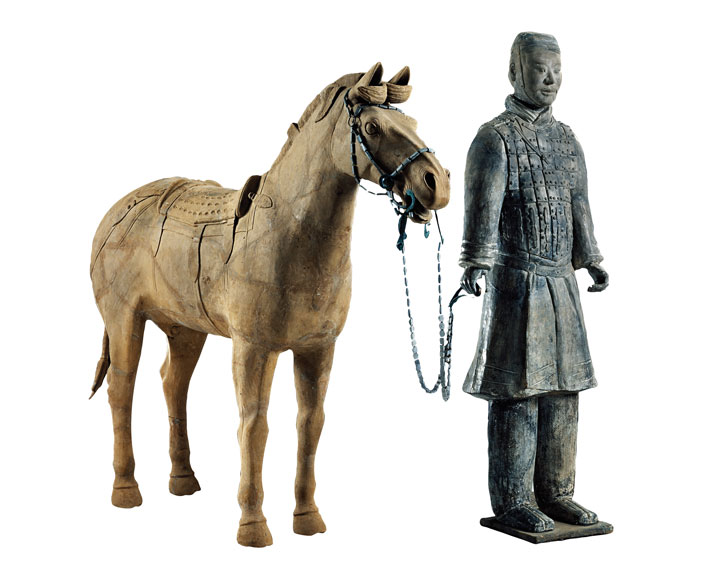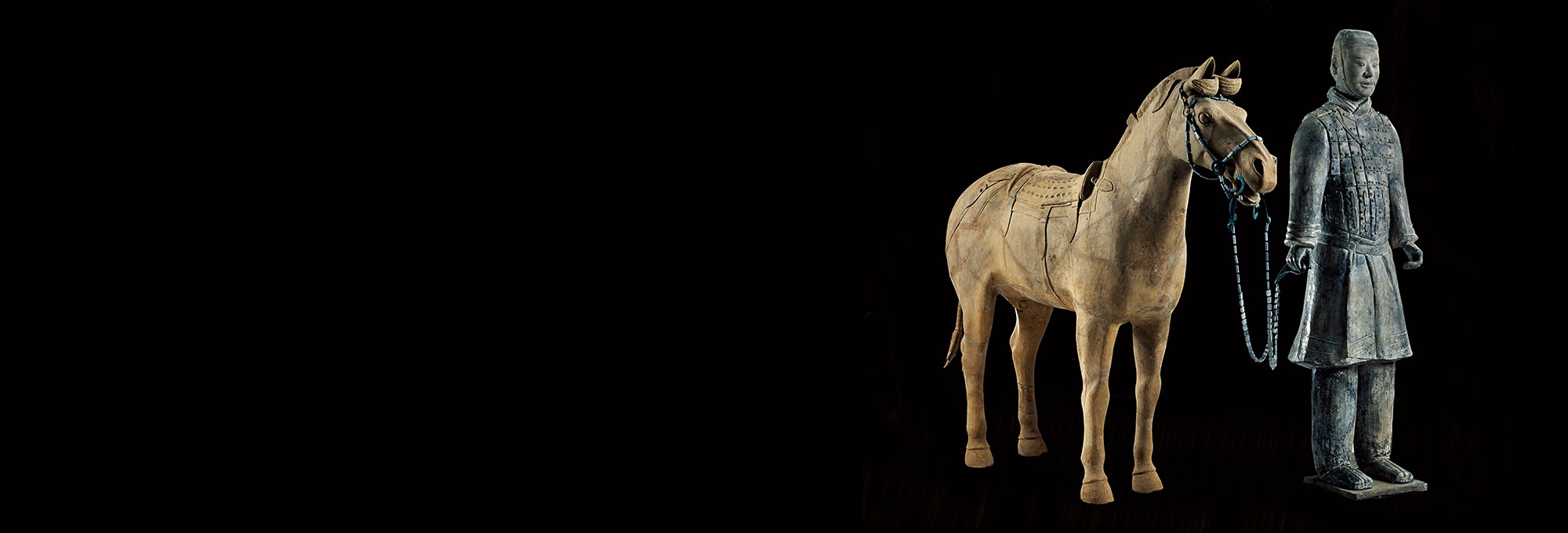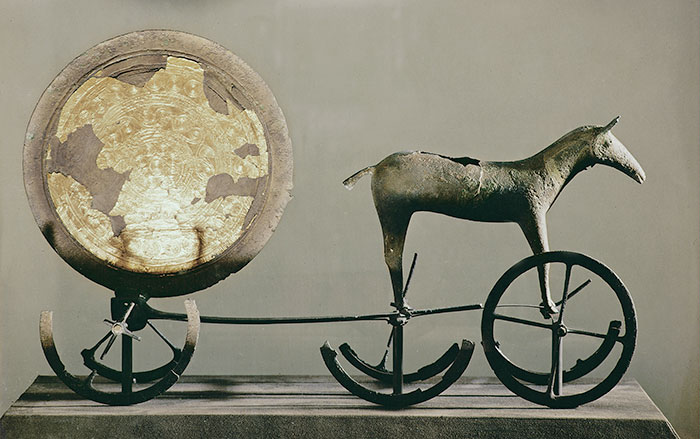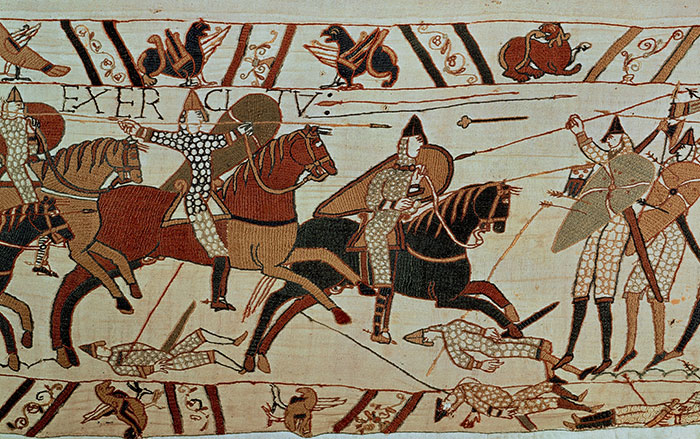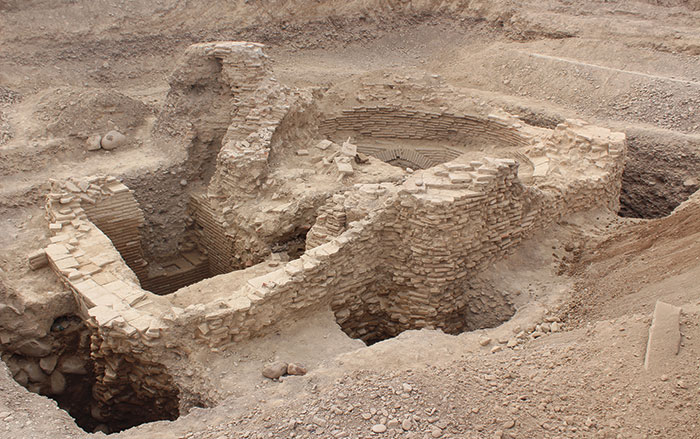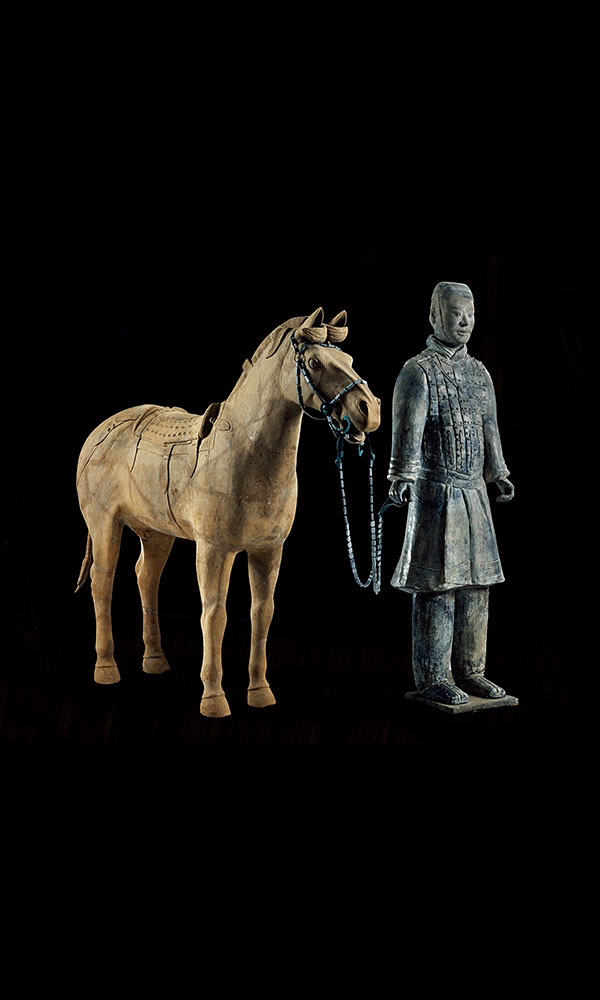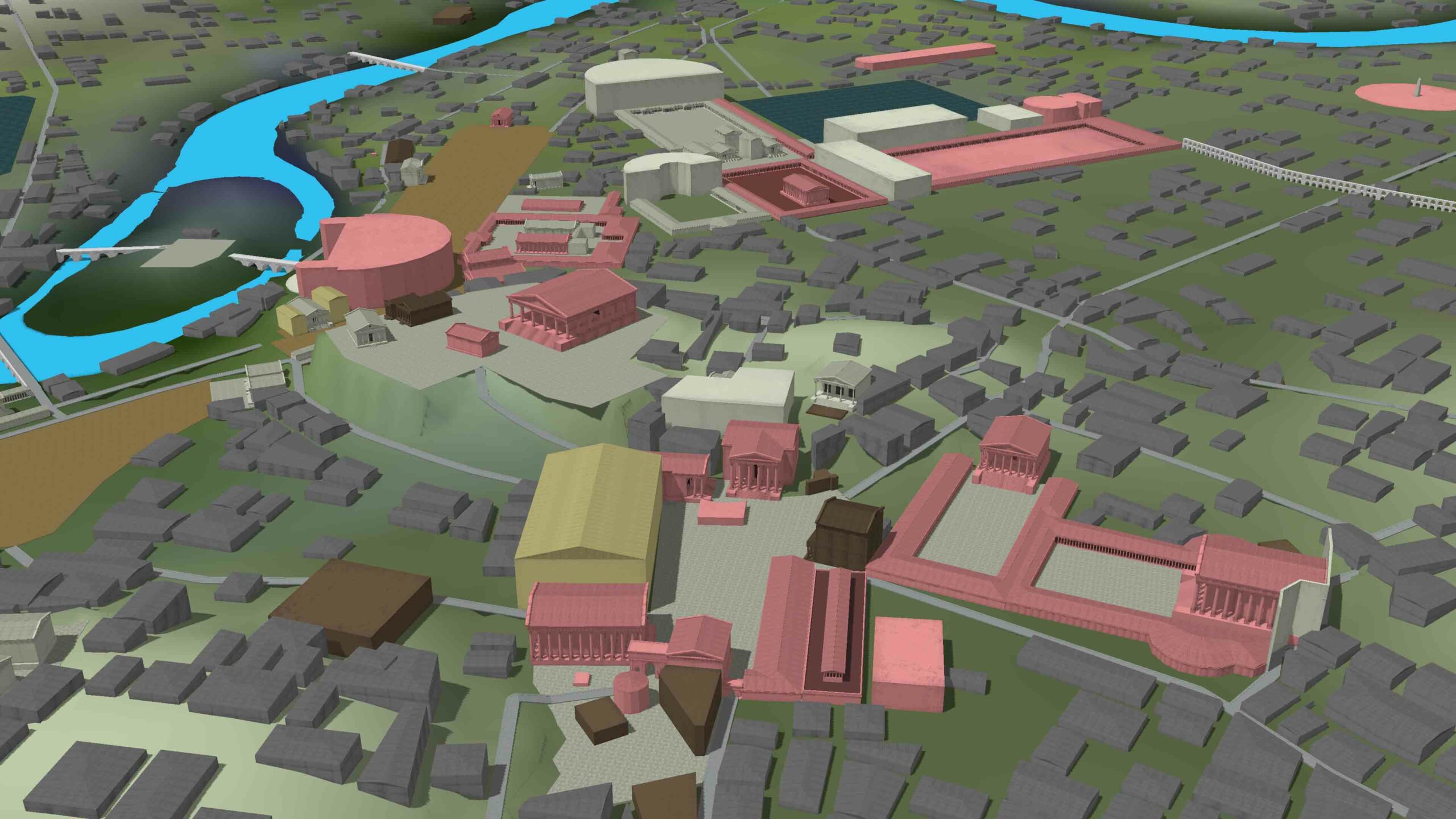Once horses were domesticated, they began to play an important role in funeral rituals. Archaeologists have found horse bones mingled with cow and sheep remains in human burials on the Eurasian steppe dating to as early as 5000 B.C. All the animals were probably sacrificed and eaten during funeral rituals. Later, the increasingly singular role horses played in human lives was reflected in more elaborate burial rites that were practiced by unrelated cultures from China to England. Perhaps the first to accord horses an honored role in burials were the Sintashta people, a sedentary culture that built large fortified settlements south of the Ural Mountains around 2000 B.C. Important members of this society were buried with their chariots and the horses that pulled them. Unlike other livestock that may have been sacrificed and eaten during funeral rites, these horses went with their owners to the afterlife intact.
Many steppe cultures that came after the Sintashta also practiced horse burials. In Siberia, the fifth-century B.C. Iron Age Pazyrk people buried their noble dead in huge mounds, accompanied by horses outfitted with cloth saddles and dramatic headdresses. But it was in China that horse burials achieved their most elaborate expression. Excavation of the sixth-century B.C. tomb of Chinese ruler Duke Jing of Qi has revealed the remains of 200 horses, which would have represented a vast fortune. The tomb has not been fully excavated, and some archaeologists estimate it might have held up to 600 horses. This number is only rivaled by representations of horses accompanying the terracotta army discovered in pits near the famed mausoleum of China’s first emperor, Qin Shihuangdi (r. 220–210 B.C.). Archaeologists estimate that 130 chariots were buried there, along with bronze and terracotta depictions of more than 650 horses.
